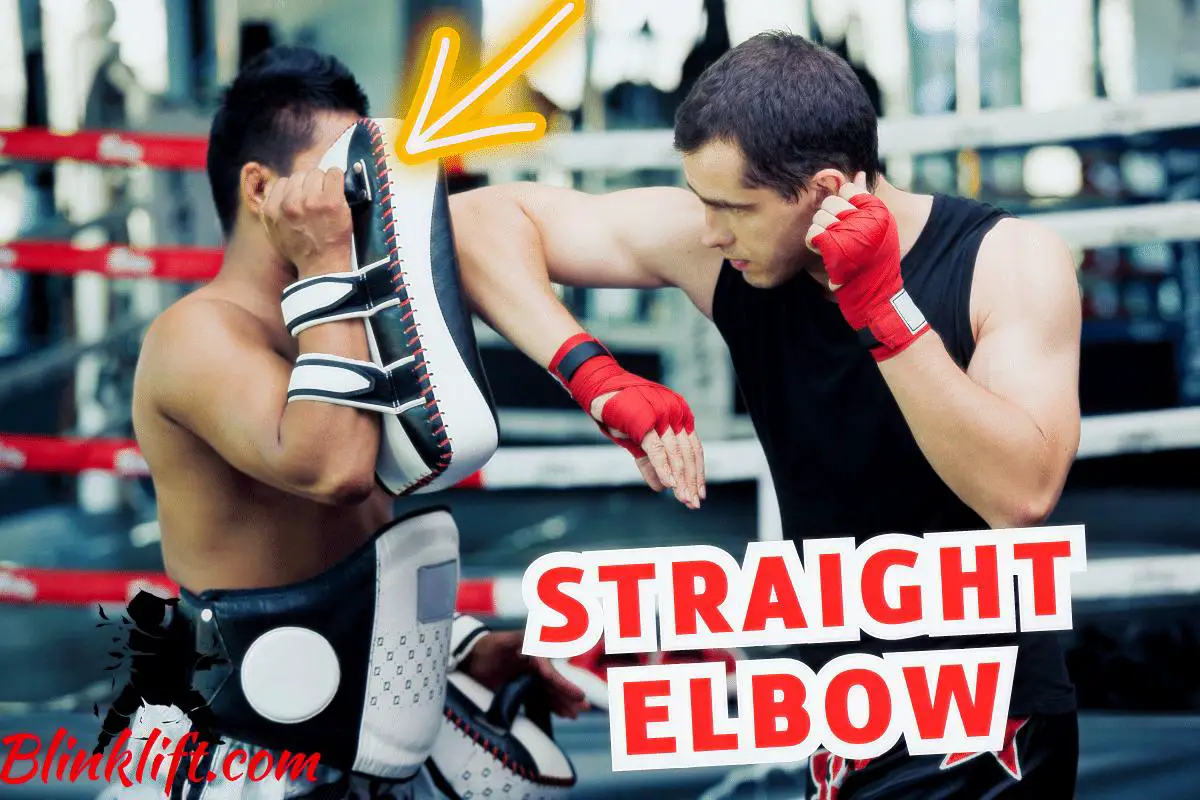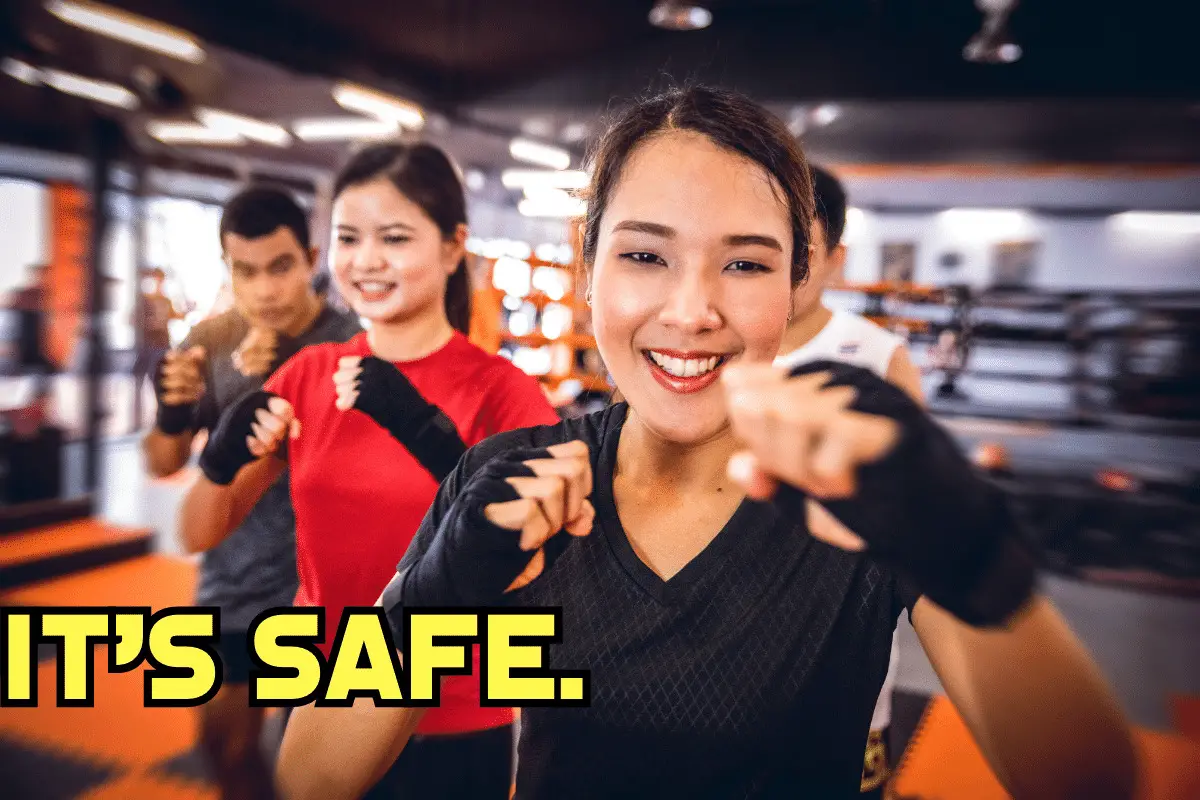Welcome to our comprehensive guide on Muay Thai’s most common injuries and how to avoid them. Muay Thai, the “Art of Eight Limbs,” is an exhilarating martial art that demands both physical prowess and mental discipline.
Muay Thai, aka Thai Boxing, is one of the most dangerous combative sports in the world, known for its aggressiveness. It’ll make you a fighter who’s capable of getting hit in the face multiple times and not moving an inch. This is why it’s more important to prioritize safety over anything else.
This guide is going to list down all the most common injuries you must avoid. It’ll also review the best ways you can utilize to avoid the same injuries. And lastly, we’ll review best practices for each injury type to ensure you understand how to avoid it fully.
Many fighters fear getting injured, which is a good mindset to have to a certain degree. While you might not be able to protect yourself to a level where you can guarantee injury-free experience, you’ll be able to minimize the chances of you getting injured.
So now, before you get bored, let’s dive into the first type of Muay Thai injury and see how you can avoid it: cuts and abrasions.
#1 – Cuts and Abrasions
Of the 195 respondents, 108 (55.4%) reported sustaining an injury during the most recent fight.
SOURCE
55.4%! That number is crazy high. That’s about half the participants. So 1-in-2 Muay Thai fighters got hurt in their most recent fight. When you take the time and examine this number, you’ll understand just how crazy it is. It’s higher than almost every other statistic I saw thus far.
Anyways, I went off on a little tangent there, but definitely an important one.
The use of elbows and knees can lead to cuts and abrasions on both the attacker and the target. Keep your elbows and knees well-conditioned to reduce the risk of cuts, and always wear Mouthguards to protect against cuts on the inside of your mouth.

If you want to read about the absolute best Mouthguards for Muay Thai training, follow this link to get yours now.
Elbows and Knees are a powerful weapon. They’re mostly able to cause cuts and abrasions, which can be very dangerous. Therefore, it’ll be best if you constantly check your face, body, and primarily your elbows and knees for any cuts to ensure you’re keeping yourself safe.
#2 – Contusions and Bruises
The second type of injury is one that’s going to be hard to avoid. However, it’s possible to avoid it in specific areas of the body. For instance, one of the most common bruise placements in Muay Thai is the shin. To that, there’s an easy solution, shin guards. However, to other, not more uncommon, areas of the body, such as the arm—protecting will be more difficult, as it has no specific protective equipment.
Muay Thai involves a lot of striking, and bruises are quite common, especially on the shins, thighs, and arms. While it’s challenging to completely avoid these, wearing proper protective gear such as shin guards can help minimize their impact.

Read about the most protective and cost-effective Muay Thai shin guards you want to get by following this link.
You’re going to get punches in your body and your face. It’s going to hurt and you likely will experience some degree of bruises. That’s why you often see Muay Thai fighters with a black eye.
It’s important to minimize the risk, as I already have mentioned. Because it’s a combative sport, it’ll be impossible to guarantee a risk-free environment (unless you want to wear a full protective suit—which will then make you vulnerable to heat-related injuries
Anyways, we want to minimize the risks. So getting a high-quality Headguard and a protective shin guard will do the trick.
#3 – Sprains and Strains
The next type of injury we’ll review is sprains and strains. These are typically caused by either overstretching a muscle or using it intensely when it’s still cold.
Overstretching or tearing of ligaments and muscles can occur due to improper warm-up or inadequate conditioning. To avoid these injuries, always perform a thorough warm-up before training or sparring, focusing on dynamic stretches and movements that target the muscles you’ll be using.
So make sure to (1) warm up properly before every single Muay Thai training session. That includes heavy bag work and pads. And (2), make sure to stretch and loosen your muscles post-training. Both of these will help you avoid sprains and strains.
…in amateurs and beginners it was sprains and strains (most common injury.)
SOURCE
I want to mention something interesting. A study found that lighter, younger, and more experienced fighters were at a bigger risk of getting injured. That’s quite interesting if you think about it. The younger you are, the more likely you are to get injured.
Likewise, the more experienced you are, the more likely you are to get injured. They went on to explain that more experienced fighters are less likely to stop their training entirely to rest and recover. Therefore, the stress their bodies and muscles feel—is higher, on average.
Lighter, younger, and more experienced fighters were at increased odds for injury within this sample.
SOURCE
#4 – Joint Injuries
Over time, repetitive stress on joints can lead to injuries such as tendonitis and bursitis. To prevent joint injuries, make sure you have a balanced training routine that includes strength training and flexibility exercises.
Another way to prevent joint injuries is by wearing wrist and hand protective equipment. These include hand wraps and fighting gloves primarily. So if you’re interested in keeping your hand and wrist as injury-free as possible, read the articles below!
#5 – Head Injuries and Concussions
Next up, we have head injuries and concussions. Whenever you watch a professional Muay Thai fight and you see one fighter knocking out the other, what type of injury do you think that is? That is, of course, a head injury.
While Muay Thai generally emphasizes the use of protective Headgear during sparring, the risk of head injuries and concussions is always present. Focus on proper defensive techniques, and if you suspect a head injury, seek medical attention immediately.
I have a separate article on the most protective Muay Thai Headgear for your money. Definitely read it if you’re interested in protecting your head in one of the most dangerous combative sports worldwide.
The key solution here is to focus on defense. Wearing protective Headgear will also help, but it’s not the prevention. Many Muay Thai fighters overlook the importance of defense to your overall fighting abilities. Without defense, you won’t be able to survive in the ring without injuries.
Therefore, you must pay attention to keeping your guard up whenever you can while learning complex defensive moves, such as the Bob and Weave, Teep, Parry, and Block.

…the head, with a lower amount of self-reported concussions (5.4%).
SOURCE
#6 – Finger and Toe Injuries
On #6 we have finger and toe injuries. I think everyone who does Muay Thai felt, at one point or another, some type of finger injury. It’s so easy to hurt your finger you wouldn’t believe it. All it takes is one punch with a not-so-good technique to cause some finger damage.
Accidental hits or footwork-related injuries can affect fingers and toes. Keep your nails trimmed, wear proper footgear that supports your toes, and consider taping your fingers for additional protection.
Likewise, many Muay Thai fighters tape their feet and hands. Taping your hands is much more common, as you can do it with easy-to-use hand wraps. If you’re interested in buying a pair of hand wraps, follow this link to see which are the best ones.
The best solution I can give you for this type of injury is to use hand wraps and tape your feet. While you want to avoid taping your toes, you want to make sure you protect and tape as much of your feet as possible. You’ll be kicking a lot, which will make you more prone to injuries there.
#7 – Overtraining Injuries
Overtraining can lead to various issues, such as muscle strains, fatigue, and a weakened immune system. Be mindful of your training volume and intensity, and incorporate rest days into your routine to allow your body to recover.
To learn how frequently you should do Muay Thai in regard to your skill level and current goals, including how to avoid overtraining in the most efficient way possible, follow this link.
I’ve been foolish enough to push my body way beyond what it’s capable of. And I’ve paid for that by not being able to train as frequently. I’m now still recovering from my overtraining injury, which was caused, believe it or not, by training too often.
So make sure to listen to your body. I didn’t do so and I’ve paid for it dearly. Not being able to do any martial art for more than a month—is difficult and pains me inside.
Here are some symptoms of overtraining that you want to stay attentive to. Recognize one of them? Stop all training immediately, consult a professional, and let your body and muscles rest.
Symptoms and warning signs of overtraining
- Unusual muscle soreness after a workout, which persists with continued training.
- Inability to train or compete at a previously manageable level.
- “Heavy” leg muscles, even at lower exercise intensities.
- Delays in recovery from training.
- Performance plateaus or declines.
#8 – Fractures and Dislocations
High-impact techniques increase the risk of fractures and dislocations. Ensure that you have proper technique and form when executing strikes and always use appropriate protective gear during sparring.
It’s critical to use a good technique. This is, in my eyes, the best solution for all the most common injuries in Muay Thai. Without a good technique, you won’t be able to truly ensure your safety even with the best protective gear in the world.
You must work on your technique and perfect it. Start slowly and work on the basics. Don’t amp up the speed until you feel your technique is on-point. I’m not asking for it to be perfect, but good enough to the point where you trust it.
Fractures were the second most common in professionals (most common injury.)
SOURCE
I’ll leave the medical information to a professional source. Here’s how to deal with a fracture:
Take these actions immediately while waiting for medical help:
- Stop any bleeding. Apply pressure to the wound with a sterile bandage, a clean cloth, or a clean piece of clothing.
- Immobilize the injured area.
- Apply ice packs to limit swelling and help relieve pain.
- Treat for shock.
Final Words
Embrace the principles of proper technique, consistent conditioning, and disciplined training to safeguard your well-being and unleash your true potential in the ring. Take the time to warm up thoroughly before each session, wear protective gear with pride, and listen to your body’s signals to avoid overtraining.
Additionally, your main focus should be rest and recovery, as without these two, your body won’t have a sufficient amount of time to recover and ensure you’re ready to tackle the next day’s tasks.
So make sure to follow all the practical solutions I’ve reviewed in this article so you can minimize the chance of you getting hurt in The Art of Eight Limbs.
If you want to get the necessary protective equipment for a safe and injury-free Muay Thai experience, I wrote the ultimate guide on must-have Muay Thai gear to ensure a safe training experience.
Here are other articles you’d benefit from reading:

